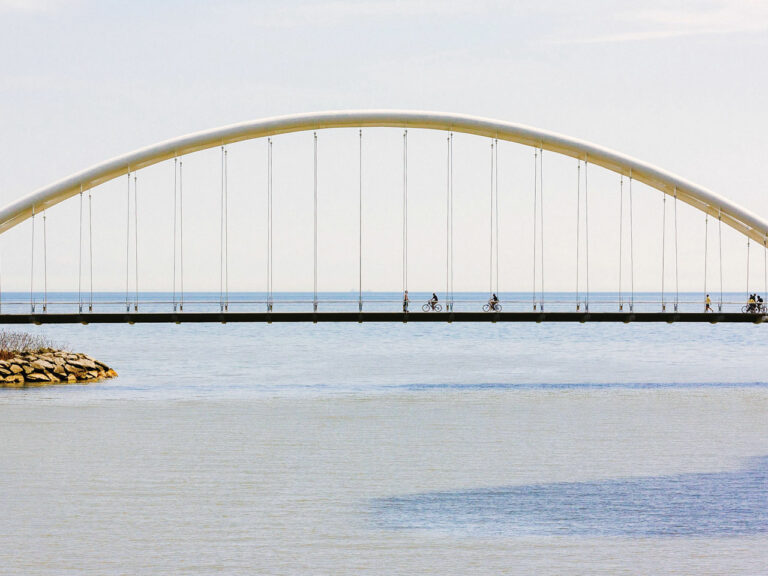There is an expression that says, “when all you have is a hammer, everything looks like a nail.” Until recently, the go-to and extremely effective solution to deal with PFAS chemicals was to use activated carbons and resin filters, applying the same treatment across the board regardless of where they were found—landfills, wastewater, drinking water—and regardless of the desired outcome. Yes, activated carbons and resins work very well, but they come at a high cost and not everyone, including municipalities and governments, is on board or has the funds to control and treat their PFAS contamination in this way.
When what makes PFAS good at its job, also makes it so bad
PFAS chemicals (per- and polyfluoroalkyl substances) are a group of man-made chemicals that came into vogue in the 1950’s and their derivatives are still used today in many products. From water resistant textiles to fire-fighting foams, they are found in almost every household—in non-stick cookware, stain resistant furniture and carpets, wrinkle-free and water-repellant clothing, cosmetics, lubricants, paint, food packaging and the list goes on. We know PFAS are found in consumer products but there are other places heavily contaminated by PFAS including military bases, airports, industrial and municipal landfills, water treatment plants (and their biosolids) as well as industrial facilities (e.g., chrome plating, papermills.) What makes PFAS compounds so revered for their chemical stability and their resistant properties, is also what makes them a huge problem for the environment and humanity. They do not degrade in nature and instead accumulate and spread everywhere: groundwater, freshwater streams and lakes then in the food chain and, ultimately, in us…and stay there forever.
When a small amount unfortunately goes a long way
These “forever chemicals” have become the focus of research, the media, and increasingly the public because of mounting evidence linking PFAS contamination to a wide range of health problems and environmental impacts. Studies have shown that these compounds even in micro doses, are toxic. They have hormone-like effects in living organisms, impacting metabolism, affecting fertility, and are linked to different types of birth defects. The most alarming part is that a dangerous level of toxicity is present at ten parts per trillion (i.e., 1,000,000,000,000). To put this into perspective, picture filling the new football stadium in Dallas with water and adding a tablespoon of PFAS compound.
No two PFAS challenges are alike
Now, imagine the limitless scenarios facing communities around the world dealing with PFAS contamination. Where is the PFAS found, where is it coming from, what is the level of contamination, what is the desired and safe outcome after treatment, what is in jeopardy downstream if it is not treated? Questions that need to be answered, and answers that in the past would be very costly.
Adapting to new tools and technologies a must
Enter ALTRA Proven PFAS solutions. A team of scientists, engineers and research experts who have developed an innovative approach and new technologies that are revolutionizing the way communities are approaching PFAS contamination. ALTRA applies a simple 3 step approach to start 1) describe 2) control and 3) treat. They create a unique turnkey and customized solution because they consider that each polluted wastewater has different and unique characteristics, depending on where it come from, whether it’s from a landfill, a military site, or a firefighting training area for example. The first step is to look at the water composition to understand the characteristics and the target of the required treatment to address the specific need. ALTRA’s advanced technology and customized approach translates into a reduction in time required and significant cost reduction versus expensive filter changes. ALTRA offers municipalities and industries a customized solution at the lowest possible cost by applying the right solutions for the problem on a per gallon of treated water basis.
Building the right toolkit
ALTRA has extensive experience customizing treatment solutions to handle PFAS chemicals contamination dating back over 20+ years. They were one of the first companies called to the scene of the fatal Lac Megantic derailment and explosion. Fires from the explosion had to be extinguished with PFAS-containing fire suppressing foam which was necessary to control the fire, but this flooded the town’s sewer system and lake with PFAS. ALTRA captured the contaminated water, prevented it from damaging water systems downstream and then treated it. Their customized approach first filtered the water with their proprietary filtration membrane system removing 90 per cent of contaminants and then applied the carbon filtration to deal with the remaining 10 per cent, finishing at non-detect levels. In addition, they were able to respond so quickly because of their agile deploy-and-operate mobile unit fleet, giving them the flexibility and agility to go anywhere.
Preparing for a PFAS-free landscape in the future
Ideally, environmental agencies and governments will take decisive action and engage into new PFAS regulations to protect public health and the environment. The U.S. Environmental Protection Agency (EPA) led the way for more regulation when, last September, they released a plan to further regulate wastewater pollution including PFAS in key industries. The EPA has determined that revised effluent limitations guidelines (ELGs) and pretreatment standards are warranted for sites that produce organic chemicals, plastics, and synthetic fibers. The EPA will update regulations for metal finishing to include PFAS, which will impact chromium electroplating facilities. ELGs are national regulations to control certain industrial wastewater discharges and municipal wastewater treatment plant discharges. This will be the first time, the EPA commits to limiting PFAS in wastewater discharges, an important step forward to better protect public health and the environment through regulation.
Eliminating the PFAS we are already stuck with
Even when all the government regulations are in place and industries are compliant to new standards to control PFAS at source, we are still left with the problem of the ones we have now. Currently in the US there are 42,000 PFAS contaminated sites identified and close to 6,000 active or suspected in Canada[1]. The PFAS at these sites are there to stay until we get rid of them. What we have learned is that times are changing, technology is advancing, and we now have more tools than just a hammer to address PFAS contamination. ALTRA has a suite of tools to customize each unique solution for the most effective elimination of PFAS chemical. By working together, governmental actors, municipal authorities and industry groups, supported by the scientific community, we will succeed in winning the fight against PFAS and making sure that all of us have safe water for generations to come, one challenge at a time and with the right tools.
[1] Number of contaminated sites in Canada: https://www.canada.ca/en/environment-climate-change/services/federal-contaminated-sites/action-plan.html
This article was written by Martin Bureau, the vice president of innovation at Sanexen.









